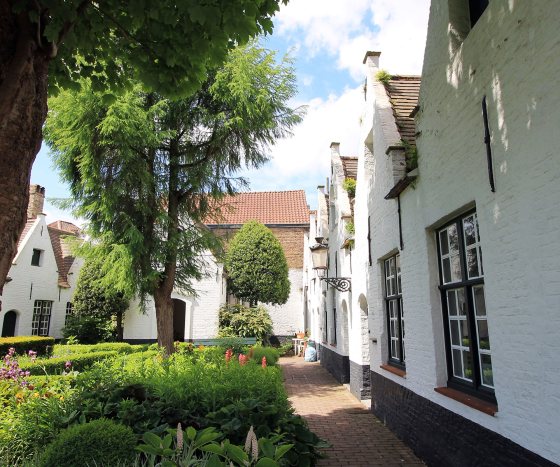
France
France is littered with cultural gems – it’s therefore no surprise that the French proudly accommodate over 40 UNESCO sites. Here are but a few samples worth mentioning:
BORDEAUX – One of these comprises the historic city of Bordeaux, which has more protected buildings than any French city except Paris. Stroll along Bordeaux’s main boulevards flanked by the river and visit the Place de la Bourse, home to an ensemble of neoclassical buildings. Admire the airy Place des Quinconces with its impressive fountain with bronze horses and pass by the Grand Théatre, which marks the entrance to the Rue Sainte Cathérine, Europe’s longest pedestrian street. Top off your visit with a sweeping view on the Pont de Pierre.
SOUTH OF FRANCE – Southern France isn’t just sun, sea and sand: here, you’ll find plenty of culture. Just think about the Pont du Gard, an ancient Roman aqueduct that crosses the Gardon River near Nîmes which is now one of the region’s most important tourist attractions. Another UNESCO World Heritage Site is the historic centre of Avignon, which includes the Palais des Papes, the cathedral and the Pont Saint-Bénezet.
OTHER – Also on the World Heritage List: the banks of the Seine in Paris, the Palace and Park of Versailles and the historic city centre of Lyon with Vieux Lyon (the Renaissance district), the silk district and the Presqu’île, the peninsula formed by the convergence of the Rhône and the Saône Rivers.
Belgium
FLANDERS – The Flemish speaking part of Belgium features an abundance of UNESCO sites, among which 26 belfries and 13 béguinages – small buildings used by beguines. You’ll find these fine examples of World Heritage spread throughout Belgium: in Ghent, Bruges, Antwerp, Namur, Tournai, Mechelen, Dendermonde, Leuven, Mons, etc. Additionally, the entire historic centre of Bruges is listed, with sights as the Church of Our Lady and the Basilica of the Holy Blood.
BRUSSELS – The listed Grand-Place, the central square of Brussels, is the most important tourist destination in the Belgian capital. The square is surrounded by beautiful guild houses, Brussels Town Hall and the King’s House, which accommodates the City Museum. In Brussels, you’ll also find numerous Art Nouveau oeuvres by Victor Horta, the most notable of which are UNESCO listed as well.
WALLONIA – The French speaking part of Belgium boasts the Major Mining Sites of Wallonia, four coal mining sites which are an important part of Belgian industrial heritage. Today, the sites of Grand-Hornu, Bois-du-Luc, Bois du Cazier and Blegny are still open to visitors as museums. Apart from these sites, Wallonia is also home to the listed Neolithic flint mines of Spiennes, nearby the city of Mons.
Also worth mentioning – and something completely different – is the Carnival of Binche. This centuries-old tradition takes place each year in the town of Binche during the 3 days preceding Ash Wednesday. The procession is strictly men-only: the so-called “Gilles”, the participants in the carnival, stomp around dressed in traditional costumes, masks and clogs, trying to ward off evil spirits. This event, which was proclaimed World Heritage by UNESCO, attracts many visitors every year.

Germany
NORTH RHINE-WESTPHALIA – Germany’s most populous state features several UNESCO sites, including Aachen Cathedral, one of Europe’s oldest cathedrals. Another listed site is Cologne Cathedral, which is Germany’s most visited landmark, attracting over 20,000 visitors to Cologne every day. A special World Heritage Site in North Rhine-Westphalia is the Zollverein Coal Mine Industrial Complex in Essen, which is reputedly the most beautiful coal mine in the world. Today, you can visit the Ruhr Museum here to learn more about the site’s fascination history.
HAMBURG – A former member of the Hanseatic League, Hamburg today is still very much a vibrant, worldly and diverse city. In the city centre, you’ll also find the UNESCO protected Speicherstadt (meaning “city of warehouses”), the world’s largest complex of warehouses, built on oak piles. Savour the architectural details from a small barge on the narrow waterways. At night, the red brick buildings and concrete bridges are especially jaw-dropping as they are illuminated by hundreds of spotlights.
BERLIN – It’s one of the most popular sights in Berlin – and rightly so, as this too is a World Heritage Site: the Museuminsel (Museum Island). Set on the northern half of an island in the Spree River, this complex unites five museums with diverse collections: the Altes Museum, the Neues Museum, the Alte Nationalgalerie, the Bode Museum and the Pergamom Museum. If you need a “green” break from the city, visit the listed Palaces and Parks of Potsdam and Berlin: an ensemble of palaces and landscape gardens erected by the Prussian kings.
BITTEN BY THE UNESCO BUG? READ THE SECOND PART OF THIS ARTICLE >












